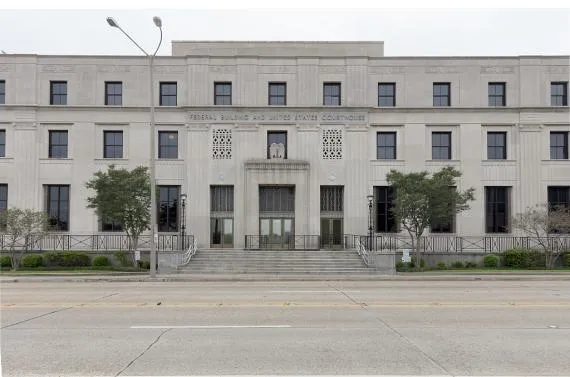I was starting to feel the pull of obligation to weigh in on the Great Plagiarism Debate, but then I thought better of it and turned to someone with genuine expertise and both big- and small-picture perspective, Susan Schorn of the University of Texas at Austin. —JW
“Plagiarism means the appropriation of another person’s ideas, processes, results or words without giving appropriate credit.”
This tidy sentence, the work of some unnamed, unknown federal employee, was published in the Federal Register in December 2000.[1] Since then, it has been quoted, republished and—according to the current discourse—plagiarized by institutions of higher education nationwide.
Here it is, sans any credit or citation, advising students and faculty at Texas A&M University, at UC Santa Barbara and at Caltech. At the University of South Carolina. Oregon State. Northwestern. Penn State. Utah State. The University of Connecticut. Brown. Over and over, on webpages with ominous titles like “Research Misconduct,” these schools are declaiming their official policies on plagiarism … and they’re all plagiarized.
At least, we must assume so, if we are to believe recent media outrage. Surely this is what Megan McArdle means by “unequivocally plagiarism”? And isn’t plagiarism always wrong? “Using watery euphemisms to refer to blatant plagiarism debases our profession, and the assertion that everyone plagiarizes if you just look hard enough debases it further,” warns Tyler Austin Harper in The Atlantic. In the examples above, schools are using verbatim copies of a complex and specific definition. They could easily provide a citation. But they haven’t. Why are they, in Harper’s terms, “debasing” themselves so?
We’d like a clean-cut definition of plagiarism, but real-world reuse of language is complex. Writing studies experts Carol Haviland and Joan Mullin have explored this conundrum in their edited collection, Who Owns This Text? Plagiarism, Authorship and Disciplinary Culture. In a chapter on administrative writing, the late Linda Bergmann (former director of the Writing Lab at Purdue University) calls “plagiarism” a “catchall term that fails to take into consideration the different practices of research, writing and attribution in different fields.” Administrators and faculty, she notes, operate in substantially different discourse communities. One important difference lies in how attribution is handled:
“In the production of administrative text … the designated author, usually the highest administrator involved in a project, both provides the authority for and takes credit for the document—and also assumes the blame, when necessary.” (133)
In higher ed administration, Bergmann explains, “the ‘ownership’ of administrative ideas and documents tends to be located in the institution or the position, not in the individual.” The same view holds in the business world, where executives are named as authors of reports written by their subordinates. In both settings, this process is considered normal and uncontroversial. It’s no secret, and it’s not considered misconduct.[2]
So all the plagiarized plagiarism definitions? Schools probably consider them administrative texts, expressions of an institutional voice. They want their academic misconduct policies to sound absolute, to impress readers with the institution’s forceful condemnation of plagiarism. The impulse is to not clutter up that message with other voices, because the schools are positioning themselves, not the federal government, as the authorities who judge and punish transgressors.[3]
When questions about textual ownership arise in a community, they’re typically settled by the community’s members. Administrators settle them one way and faculty settle them in other ways. Every discipline has its own culture of sharing and acknowledging ideas, built over years of shared conversations (what we academics call “discourse”). This is why, for example, the Society for Industrial and Applied Mathematics[4] investigates charges of inadequate citation by asking if the contested material is “regarded as common knowledge in the SIAM community.” They don’t assess plagiarism charges by consulting national op-ed pages, or political think tanks, or angry hedge fund managers, because those people aren’t industrial and applied mathematics professionals. SIAM wants qualified professionals to decide questions like whether omitted citations are “essential to the work presented.” Those are the only people who can decide those questions. Outsiders don’t know the field’s scholarship and have no idea what is essential to it.[5]
The problem, as Haviland and Mullin point out, is that this disciplinary knowledge—what, when and why to cite; what’s considered “common knowledge”; who “owns” a text—is often “tacitly held” by members of a discourse community (11). It’s not taught explicitly and may be invisible to novices and outsiders. Higher education is a collection of many disciplines that all have slightly different expectations around attribution, authorship and citation. Yet most schools officially define plagiarism as a generic concept, even though many normal practices of scholarship and administration fall outside their definition. Rather than talking about these differences and the very practical reasons for them, we’ve outsourced the problem to software that claims to “detect plagiarism,” and then we struggle to enforce its largely arbitrary accusations and blame underpaid, overworked instructors for “failing to teach citation skills.”
As we have just seen at Harvard, the tacitly held, discipline-specific nature of citation standards offers a golden opportunity for those seeking to punish, harass or bully writers, especially writers from marginalized groups. Definitions of “common knowledge” and “substantial copying” can be broadened or narrowed, opened and closed like a gate, to separate community members from outcasts, sheep from goats, university presidents from the academic rabble. People we don’t want in our community, for whatever reason, can be bounced out because they have, in effect, “transgressed the unwritten law.” Like the inscrutable literacy tests that prevented Black Americans from voting, citation concerns can be weaponized by people who want to control or punish.[6]
Our current discourse about plagiarism, driven by bad faith and worse software, feels like a particularly frustrating captcha, where we peer at a grid of tiny, unrelated images and puzzle over which bits of chrome might or might not be part of a bus. But we really don’t care about the buses. Whether there’s a bus or boat or traffic light in any one image is irrelevant to the actual process we’re supposedly concerned with: the scholarship, the centuries of compiled knowledge, that plagiarism standards are meant to protect.
The questions we should be asking are things like, Where does this bus go? Which bus takes us to the airport or the hospital? What are the connections that let you transfer from one bus to another? That’s how you sort out the voices in disciplinary discourse, where authors use the work of their peers to derive new ideas, strengthen or condemn old ones, and generally move human knowledge forward.
Haviland and Mullin call on faculty “to investigate and then articulate” the different, field-specific concepts of textual ownership, “and to challenge the one-size-fits-all definitions of plagiarism and their origins” (18). Heeding their call would give us a better understanding of our own professional practices and would help us teach students far more effectively. It would also make us less vulnerable to the mercurial vendettas of aggrieved billionaires like Bill Ackman. It could head off what Ian Bogost envisions as a plagiarism war, “with automated accusations and manual rebuttals,” prosecuted by opponents of higher education. It might even generate appreciation for the painstaking work of research and scholarship and the collaborative, consensus-building individuals who make it possible.
Or we could keep engaging in circular debates with whoever currently has an ax to grind with higher ed. Just keep in mind that the people challenging you to SELECT ALL IMAGES CONTAINING A BUS will happily throw you under one.
[1] Vol. 65, No. 235.
[2] Bergmann points out that something similar happens in large science laboratories, where lead researchers’ names take the top slot among an article’s authors and the contributions of lowly lab assistants may not be credited at all. This system is certainly subject to abuse, but it is considered appropriate, even necessary, to the discipline.
[3] Ironically, the likely reason these schools adopted this particular definition is that it’s part of the National Science Foundation’s rules for grant recipients. Any institution receiving NSF funding obviously wants to make sure those rules are followed on campus. Some schools do cite the federal rules as part of their plagiarism definition. But choosing to elide the connection doesn’t constitute academic misconduct. At least, I haven’t heard of any schools losing NSF funding because they plagiarized their plagiarism definition from the NSF. Maybe The New York Times will run a few dozen articles about that.
[4] Which, notably, cites both the NSF and the Federal Register in its discussion of plagiarism.
[5] See Appendix B of Who Owns This Text? for many more amusing examples of people trying to define “common knowledge” in generic terms.
[6] As scholars like Rosina Lippi-Green have documented, “standards” of usage, grammar and pronunciation serve this same function.




















Discussion about this post